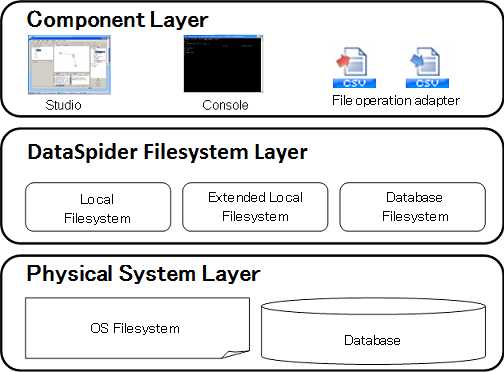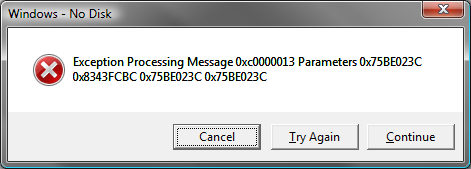| Item |
Filesystem Type |
case sensitive or case insensitive |
applicable fields |
Files and directories found under /etc, /home, /share
(when a repository database is used) |
Database filesystem |
Complies with the database you use and settings of that |
- Project name
- Service name
- Global Resource name
- Global Schema name
- Trigger name
- Holiday settings calendar name
- In the file path string to the log output destination.
- In the name of a user or a group(when a repository database is used)
|
Files and directories found under /etc, /home, /share
(no repository database is used) |
Local filesystem |
Depends on OS platform in which DataSpiderServer is running
- Windows version: Case insensitive
- UNIX/Linux version: Case sensitive
|
| Name of files and directories to be stored, except for /etc,/home,/share |
Local filesystem and Extended local filesystem |
Depends on OS platform in which DataSpiderServer is running
- Windows version: Case insensitive
- UNIX/Linux version: Case sensitive
|
- |
| Names stored in configuration files. |
- |
Case sensitive |
- Script names
- Folder names
- Script variable names
- Environment variable names
- Names of icons
- Names for log search criteria
|
| Names of files and directories stored under associated mount points |
Database filesystem |
Case Sensitive |
- |
| Local filesystem and Extended local filesystem |
Depends on OS platform in which DataSpiderServer is running
- Windows version: Case insensitive
- UNIX/Linux version: Case sensitive
|
- |
 If there is no repository database used, Local filesystem it the only option available for the filesystem type.
If there is no repository database used, Local filesystem it the only option available for the filesystem type. Can be used for the system with a repository database.
Can be used for the system with a repository database. Can be used for the system with a repository database.
Can be used for the system with a repository database.

 This issue has been confirmed, when DataSpider is hosted by Windows Vista running on VMware(not always)
This issue has been confirmed, when DataSpider is hosted by Windows Vista running on VMware(not always)